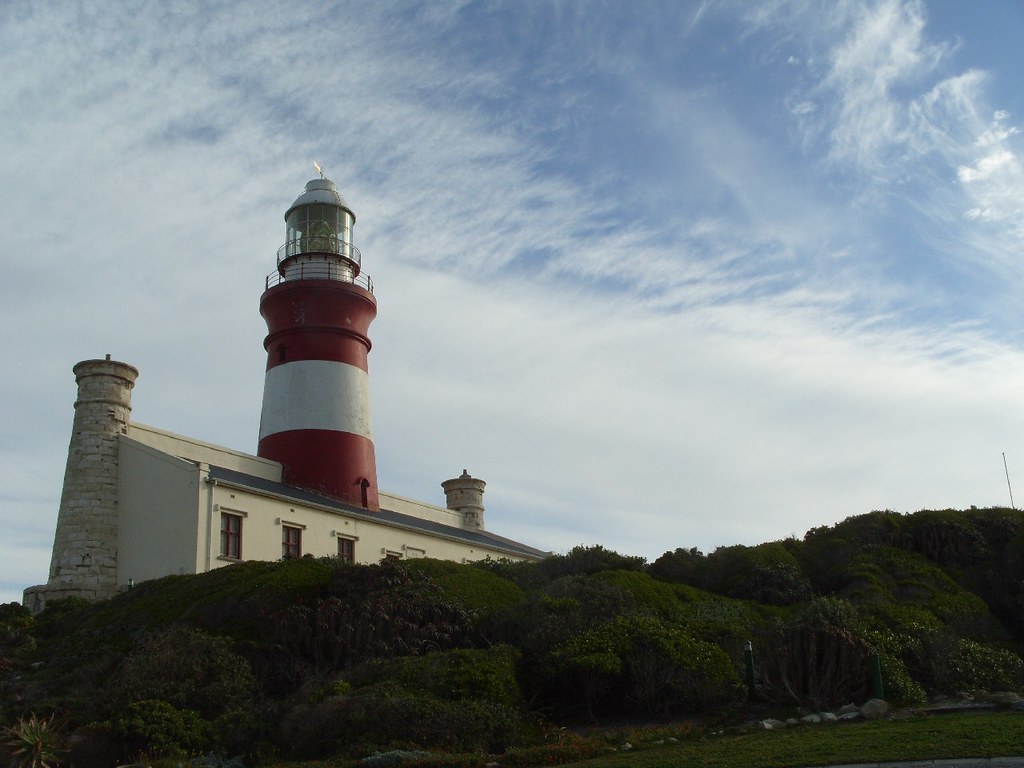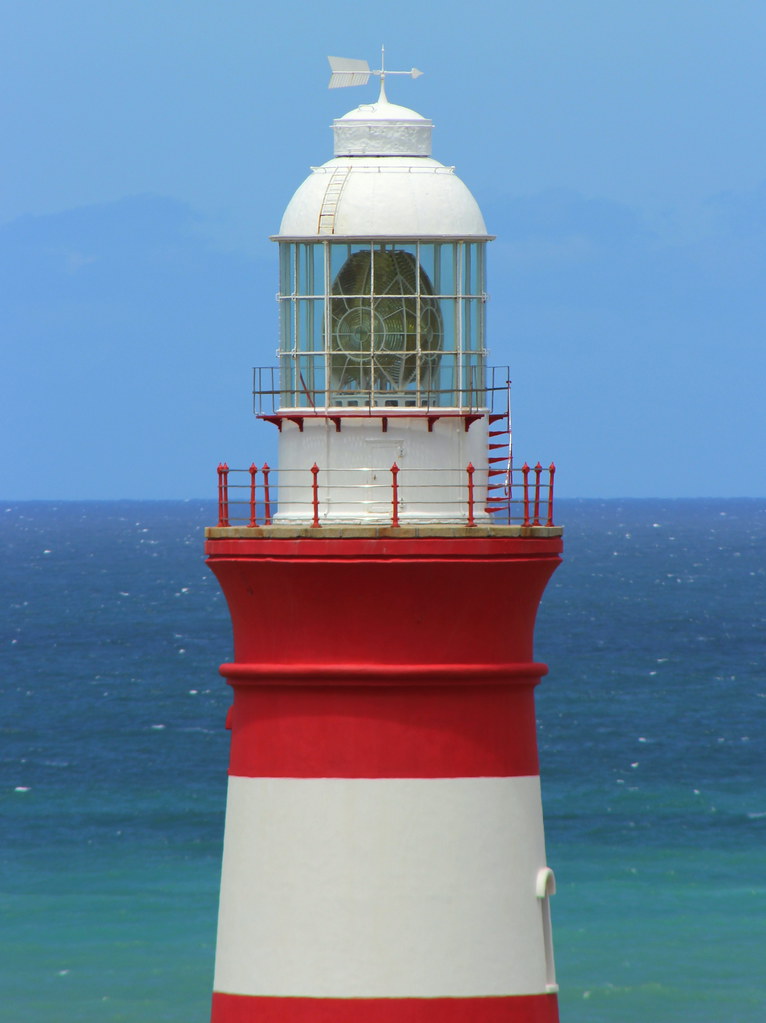The Agulhas Lighthouse is located in the town of L'Agulhas, South Africa. It was the first properly designed and equipped lighthouse on the South African coast and marks the confluence of the Indian Oceans. It is also a symbol of the technological transformation of maritime history. The tip of the continent is approximately 1 kilometer (0.6 mi) west-southwest of the lighthouse. Historically, the combination of strong winds, conflicting currents, and shallow waters with hidden reefs made Cape Agulhas a dangerous location for sailors.
History and Construction
Construction of the Agulhas Lighthouse began in 1848, and its lamp was first lit on 1 March 1849. It was the first properly designed and equipped lighthouse on the South African coast and is considered the first in the Southern Hemisphere. Calls for the lighthouse's construction began shortly after the British takeover of the Cape Colony, following the 1815 shipwreck of the "Arniston" and the deaths of 372. Initially, the British government refused to provide funding, but in 1847, recognizing the benefits of safer navigation to the British Empire, it agreed to finance half of the project's total cost.
The main sponsor of funding and construction of the lighthouse was Lieutenant Colonel Charles Michell, a surveyor and civil engineer for the Cape Colony. Having studied lighthouse design and current technology in England and France, Michell designed the structure, which is considered his last major work.

Agulhas Lighthouse Image ( Flickr )
Architectural and Structural Features
The lighthouse is designed in the Egyptian Revival architectural style. The towers at either end of the building are believed to have been modeled after the Lighthouse of Alexandria. These towers originally served as chimneys for melting the tail fat of local sheep to provide fuel for the light. The walls of the structure were constructed using solid limestone blocks quarried from a nearby quarry. The lighthouse consists of a round tower painted red with a white stripe and is attached to the keeper's house, which now houses a museum and restaurant.
The lighthouse is 27 metres (89 ft) high, with the focal plane of the light being 31 metres (102 ft) above high water level. With a construction date of 1849, it is the third-oldest lighthouse in South Africa and the second-oldest surviving lighthouse after Green Point. The lighthouse's light characteristic is specified as FI W 5s, meaning one white flash of light (FI W 5s) every five seconds. The rotating optical lens (grade 1) has a power of 7.5 megacandelas and a range of 30 nautical miles (56 km; 35 mi).

Architectural Image of Agulhas Lighthouse ( Flickr )
Technological Development and Restoration
- Original Light Source: The lighthouse's original lantern incorporated a state-of-the-art first-order constant dioptric lens and Argand burner manufactured by Henry-Lepaute of Paris. This provided a 4,500 candela beam visible up to ten miles at sea.
- Lens and Burner Changes: Originally fitted with a Henri Lepaute lens, the lantern was replaced in March 1910 with a first-order Chance Brothers lens producing 470,000 candlepower. In 1921, a Chance Brothers oil vapor burner was installed.
- Electrification and Power Increase: The lighthouse was electrified in 1936, increasing its power to 12 million candelas.
- Decommissioning and Temporary Tower: The limestone tower was "condemned" in 1960 due to deterioration of its walls, and decommissioned in 1968 because the deterioration of its sandstone walls made the tower unsafe. The light was moved to a new aluminum lattice tower at the rear of the building. This new tower has been fitted with a 300mm Stone-Chance four-panel catadioptric lens that emits a 1,069,000 candlepower white flash every five seconds.
- Restoration and Recommissioning: The original structure was saved from demolition through a two-decade public effort led by local conservationists and the Bredasdorp Shipwreck Museum. The tower and light were fully restored in 1988, and the original tower and light were recommissioned. An aluminum tower was installed at Quoin Point (between Agulhas and Danger Point) to replace the old cast-iron tower, while Stone-Chance optics were installed at the Groenriviermond light in Namaqualand, north of Cape Town.
Current Status and Operation
Agulhas Lighthouse currently serves as South Africa's official lighthouse museum. It houses the keeper's house, a lighthouse museum, and a restaurant. The lighthouse is managed by Transnet National Ports Authority and is maintained by South African National Parks (Agulhas National Park). The site is open daily, year-round, and the tower is also open for an entrance fee.


